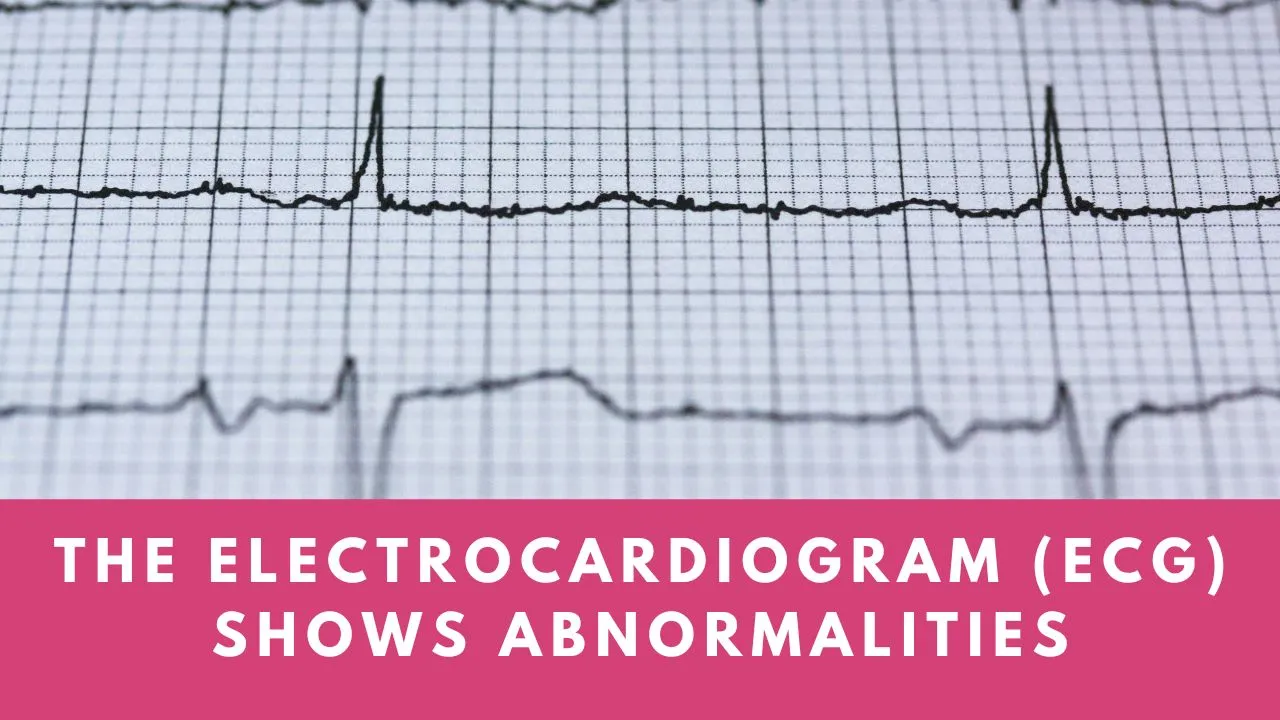Many people panic when they find sinus arrhythmias, abnormal ECG, T waves, etc. during an electrocardiogram and think they have heart disease.
The electrocardiogram has made a great contribution to understanding the heart and diagnosing heart disease. But does an abnormality on the electrocardiogram mean you have heart disease? In fact, this is not necessarily the case. It must be interpreted on a case-by-case basis.
1. Sinus arrhythmia
Most people know that the heartbeat should be regular and regular. So when they hear “irregular heartbeat,” many people think it is an abnormal EKG. But doctors often say: “No treatment necessary.” Why is that?
Sinus arrhythmias are common in young children, young people, and the elderly. Sinus arrhythmias are characterized by irregular heartbeats and can be divided into two types: normal physiological and pathological. The former often occurs in healthy people who are overworked, emotionally agitated, smoke and drink a lot, etc. The latter can be observed in various organic diseases Heart Diseases such as coronary arteries heart disease Myocarditis, cardiomyopathy, rheumatic heart disease, etc., with potential risk of cardiac accidents.
“Sinus arrhythmias generally do not require specific treatment for people without symptoms, just observation and follow-up.” If your heartbeat suddenly accelerates, palpitations become dark, and seizures occur frequently during exercise, it is recommended that you have dynamic electrocardiography and cardiac Perform echocardiography. Review and determine whether further treatment is necessary based on the test results.
2. Sinus tachycardia
In general, a normal person’s heart rate should be between 60 and 100 beats per minute in a calm state. Tachycardia is easy to understand. It means the heart beats too fast. Heart rate is also called heart rate (do not confuse with heart rhythm). If the heart rate exceeds 100 beats/minute, it is called sinus tachycardia. The symptom is an obvious feeling of panic, but this condition is mostly physiological and temporary in nature. It mainly occurs with alcohol consumption, physical activity, emotional agitation, etc. and generally does not require treatment.

However, it should be noted that the occurrence of unexplained sinus tachycardia is likely caused by heart disease, fever, anemia, pain, hyperthyroidism, and certain medications.
3. Sinus bradycardia
A heart rate below 60 beats/minute indicates sinus bradycardia, which means that the heartbeat is too slow. People who regularly exercise and do strenuous physical work have nothing to worry about. This is a normal phenomenon. Sinus bradycardia can also be caused by the influence of certain diseases and certain medications. Mild bradycardia does not affect your health. If the heart rate is below 50 beats per minute, it is severe bradycardia and you need to be alert.
4. T wave changes
Don’t worry if your electrocardiogram report concludes “non-specific T wave changes.” This anomaly is mostly caused by emotional anxiety and palpitations and has no important clinical significance.
5. ST changes
Unlike the T wave, “ST changes” have very important clinical significance and require close attention. Its appearance indicates that you may be suffering from myocardial ischemia, and also indicates diseases such as angina and myocardial infarction. In addition, cardiomyopathy, electrolyte imbalances, high blood pressure and heart disease can also cause “ST changes”.
6. Bundle branch block
“Bundle branch” is the conduction path after the cardiac electrical impulse enters the ventricle and is divided into left and right bundle branches. Right bundle branch block is the most common and is divided into complete and incomplete block. It is important to understand the cause of bundle branch block, but this alone has little clinical significance and does not require treatment.
In fact, the electrocardiogram is just the most basic and common examination method. Not all problems detected on an electrocardiogram mean that you have heart disease.
Take an irregular heartbeat, for example. Drinking too much strong tea or coffee the day before the physical exam can also cause cardiac arrhythmias. Excitement, anxiety, psychological stress, etc. can also lead to increased heart rate and cardiac arrhythmias. But at the same time, coronary heart disease, rheumatic heart disease, pulmonary heart disease, hypertensive heart disease, cardiomyopathy, hyperthyroid heart disease, etc. can also cause cardiac arrhythmia.
An electrocardiogram is a cross-sectional study that shows only the heart’s electrical activity at a specific node and over a specific period of time. Therefore, the electrocardiogram reflects only part of the heart’s electrical activity and does not necessarily indicate a structural problem with the heart. However, the possibility of comorbidities cannot be ruled out. Therefore, after the occurrence of most electrocardiogram problems, “it is recommended to contact a cardiovascular specialist for further evaluation and treatment.”
Notice
In recent years there have been repeated cases of sudden deaths in young people due to physical activity. Therefore, for people with a high risk of cardiovascular disease, it is best to do a cardiopulmonary function test before training and, under the guidance of a doctor, develop a training method, intensity, frequency, duration, etc. that suits them , to avoid extreme situations due to excessive or incorrect physical exercise. People over 35 years old, obesity, smokers, abnormal blood lipid levels, high work pressure and irregular lifestyle are potential high-risk groups for cardiovascular disease and should pay more attention to cardiac examinations.





